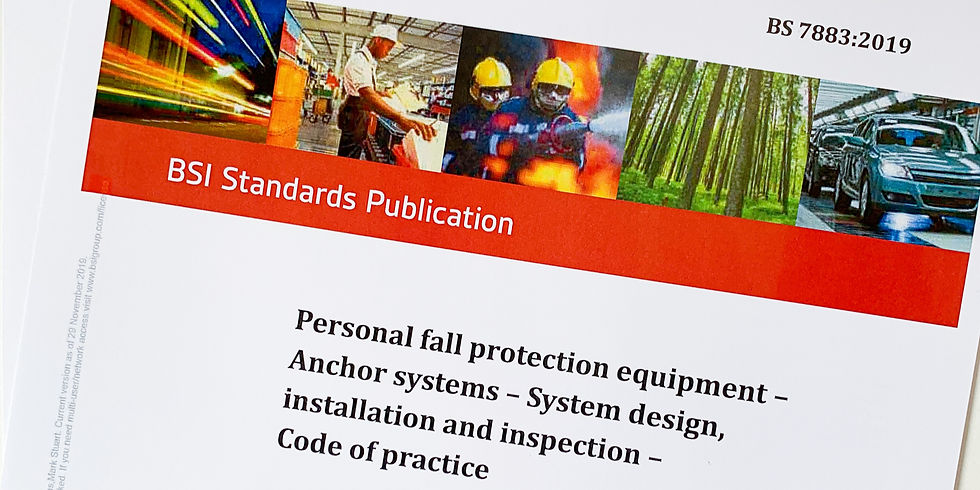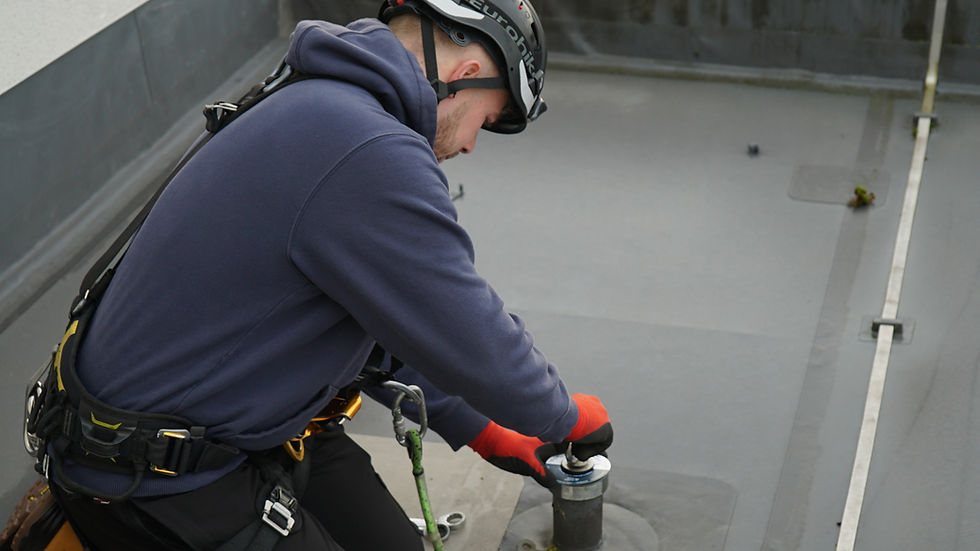FAQ: Why Do I Need System Testing?
- KaydeeSayfa
- Aug 10, 2025
- 3 min read
Updated: Aug 14, 2025

In our previous blog posts, we established a clear understanding of "What a Height Safety System is" and "What Height Safety System Testing Involves". These blogs cover how essential height safety systems such as; fall restraint lines (mansafe systems), eyebolts, and guardrails—are for keeping workers , the general public, and buildings safe. We also detailed what a thorough, professional inspection involves, from reviewing the Technical File to performing functional proof tests and issuing Certificates.
But the most important question for any Dutyholders including facility managers or building owners remains: why is testing height safety systems so necessary? The truth is, a height safety system is an asset you hope you never have to rely on. But if it is ever called upon, it must work flawlessly. Regular, professional testing is the only way to ensure this is the case. It is not just about compliance; it's about a fundamental duty of care.
Your Duty of Care
The primary reason you need to test your height safety system is simple: it's the law. The Work at Height Regulations 2005 places a clear responsibility on "Dutyholders" (those who control work at height) to ensure all equipment is properly maintained and safe for use.
The exact requirements are set out by British Standards, such as BS 7883:2019, which specify that systems must be inspected and re-certified by a qualified individual at regular intervals, typically at least every 12 months. Failing to do so puts you and your organisation in direct breach of these regulations, opening yourselves up to significant legal risks.
Protecting Lives
A height safety system is a life-saving device. An untested system is an unknown variable that could have hidden damage, corrosion, or a compromised anchor point that would fail at the critical moment.
Regular testing by a qualified professional is the only way to:
Identify Hidden Faults: Find issues that are invisible to the untrained eye, like hairline cracks or internal corrosion.
Confirm Structural Integrity: Proof testing ensures that components can withstand the force of a fall without failure.
Ensure Readiness: Verifying that the system is fully operational and ready to protect a worker if needed.
By ensuring your systems are tested and certified, you are fulfilling your moral responsibility to protect every person who works on or near your building.
The Financial and Practical Imperative: A Smart Investment
While the legal and safety reasons should always take priority, there is also a clear business case for regular testing. The cost of a professional inspection is a fraction of the cost of inaction.
Avoid Fines and Prosecution: Non-compliance with safety regulations can lead to substantial fines and even prosecution, damaging your company's reputation and bottom line.
Maintain Insurance Validity: Many insurance policies are voided if a building's safety systems are not regularly maintained and certified. Insurance providers are increasingly requiring buildings to meet the standards set out in BS7883:2019. If these conditions are not met then building owners may struggle to access affordable coverage.
Prevent Costly Repairs: Identifying a small issue like a worn component during a routine test is far cheaper than dealing with a catastrophic system failure and the extensive repairs that would follow.
Regular testing is a proactive investment that safeguards your organisation from financial and reputational disaster.
The Peace of Mind Imperative
Ultimately, testing height safety systems provides invaluable peace of mind. It allows you to confidently hand over the keys to a maintenance team, knowing that you have done everything in your power to provide a safe and compliant working environment.
At KaydeeSayfa, we are here to be your knowledgeable and supportive partner, helping you navigate these responsibilities. Our detailed and professional testing services ensure your systems are not just present, but truly safe.
Ready to ensure your height safety systems are compliant and safe? Contact us today to schedule your annual inspection and fulfil your duty of care.



